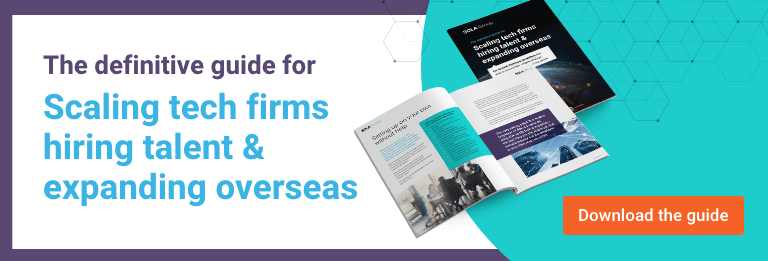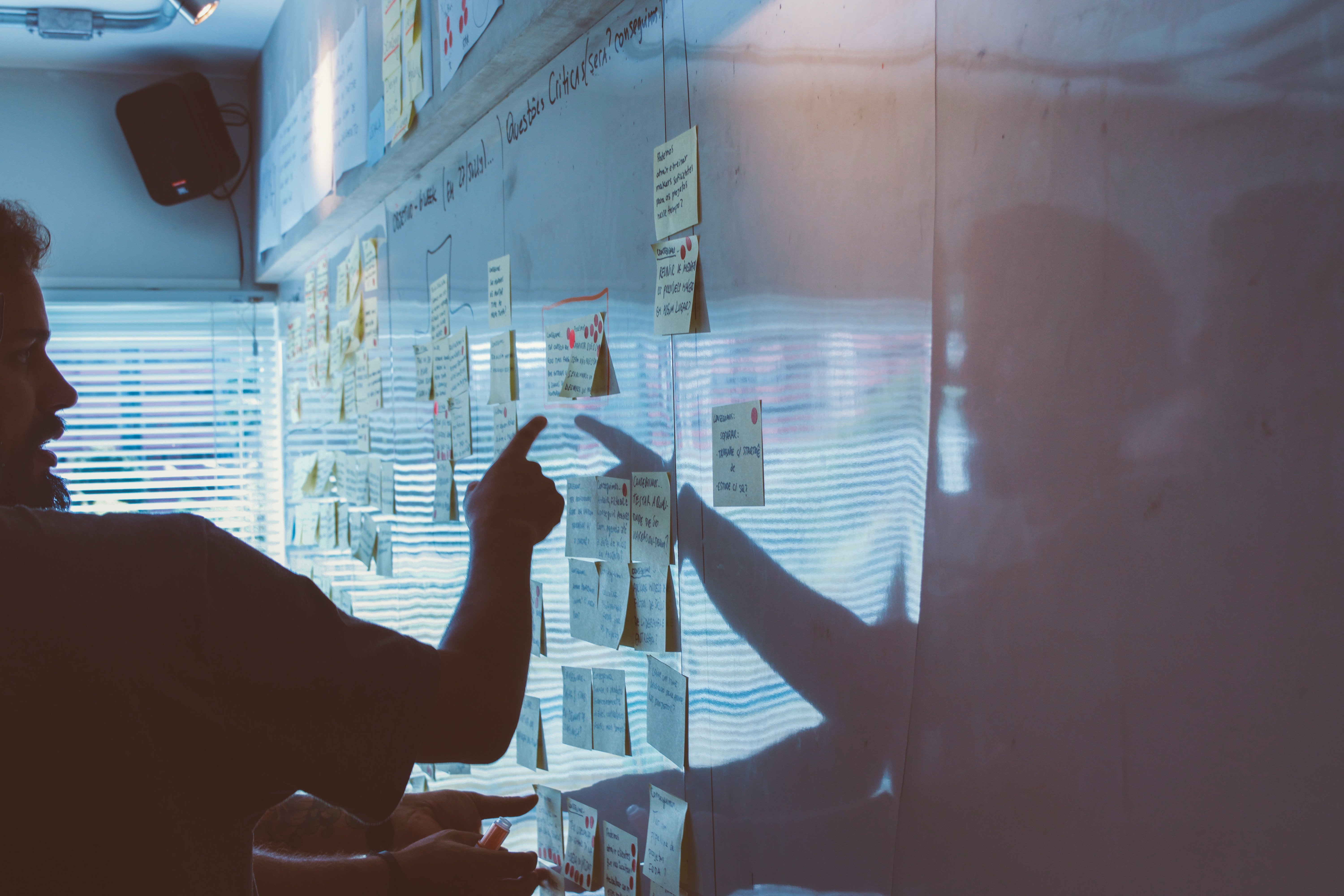Outside the US, the law is different. Every decision a CEO of a SaaS company makes when expanding internationally should keep this in view. Failure to do so can lead to your most important asset—your intellectual property (IP)—floating around in limbo in a different country, unprotected and at risk.
To charge your phone in a different country, you need the phone and the right plug adapter—a US plug will not work in the UK or Europe. Expanding internationally is not dissimilar: you might have the right business model, but you risk success unless you have the right converter for your IP.
IP – your most significant asset
Your IP is your biggest asset—it generates your revenue and most of your value. If you sold the company tomorrow, it’s your IP that would allow you to sell it for multiple times the revenue. So, protecting your company's IP is one of the most important tasks for any founder and CEO. And for the SaaS CEO, certainly one of the principal legal obligations they owe to their company and shareholders.
A SaaS company's IP is comprised of many legal IP components—all of which apply to different expressions of the product. These include code, graphical user interfaces, databases, tech sheets, flow charts, and other design materials. Each of these expressions may be protected by a specific type of copyright. The base code, for example, is legally a type of book; therefore, it is protected as a ‘literary work’.
Many types of employees have access to different parts of a company's IP. The technical support team, for instance, has access to the computer program, and the salespeople have access to company databases and tech sheets. Suppose you only have an office in the US and employ staff nationally. In that case, their access to your IP is not a problem, as you are covered by all the benefits of their employment (confidentiality, immediate ownership of the IP they create, etc.). You have an uninterrupted chain of trust and possession of your IP—which flows directly from your company to your employees and back again.
But here’s the problem: when you expand internationally, the very thing that is driving your revenue—your IP—can put you at risk.
International copyright – a square peg in a round hole
In theory, signatories to international IP conventions, including the 'Berne Convention' and the 'Agreement on Trade-Related Aspects of Intellectual Property Rights' automatically recognise the legitimacy of foreign works. Globally, most countries are signatories to these agreements (including all of Europe), and their courts agree to accept foreign copyright.
Therefore, you would be forgiven for mistakenly believing that foreign countries automatically safeguard your IP when expanding internationally. But this is unfortunately not the case.
Copyright (and IP in general) is not like a two-pin electric plug made in the US that you can plug into a two-pin electric socket in France. This is still true if you get one to fit the other and you're not concerned about the different voltages—it is not that one-dimensional.
Instead, copyright (the principal route for computer software product ownership) is a four-dimensional shape (plug/socket shape and power supply voltage) that is similar but slightly different in every country (just like plug sockets (that run from A–O).
Taking a US A-Type 120v Copyright and expecting it to fit in a Type-I 240v Copyright in Australia is the same as thinking Australian Copyright Law will match up with and safeguard your local US IP. Some countries have stronger copyright laws, and some countries have weaker laws. Some countries recognise a large bundle of copyright rights, and some countries recognise few. While there are crossovers, no two laws ever match perfectly, meaning international expansion leaves a company's IP dangerously vulnerable. Vulnerable unless it's being managed by an expert international electrical (IP) engineer.
How vulnerable depends on how you plan to expand internationally.
The most dangerous route – a PEO or EoR solution
PEO and EoR solutions offer a relatively cheap way for companies to expand overseas. They market themselves as simple solutions. But while they might provide companies with a quick way to expand, they cannot resolve the complex problem of international copyright. Their structure prevents them from doing this.
The majority of PEO and EoR solutions use subcontractors to employ workers—the PEO / EoR often do not directly employ the worker. This means that instead of two parties involved (in the national employment model), there are four parties involved. And even if the PEO / EoR employs the worker directly, they use a co-employment model that adds a third party into the chain of trust and chain of IP possession.
In this arrangement, your company’s IP has to flow from the parent company to the PEO / EoR to the local subcontractor to the employee and back again. The flow of the chain of trust and chain of IP possession in this scenario is not secure as the parent company has, in effect, zero real control over the chain. Therefore, it is easy for confidentiality to be breached and IP to fragment or be lost. Losing IP in the maze of EoR / PEO possession and custody can be catastrophic.
A better solution – create your own foreign entity
A more secure solution would be to create your own foreign entity. If the US parent company has a 100% shareholder stake in the overseas company, it is possible to develop intra-company agreements by which the IP is transferred back to the parent from abroad.
Still, intra-company agreements are not easy—despite the fact the company is 'the same'—as the IP transfer is to a different country, and the problem persists. Transferring your IP to the parent company abroad is still like trying to fit a square peg in a round hole. However, intra-company agreements can work if your company accesses the tools to make the two shapes match. You’ll need that expert international electrical (IP) engineer again.
Regardless, many tech companies expanding overseas do not want the extra complication of having to learn Comparative Intellectual Property Law in addition to the myriad problems that come with establishing an owned overseas entity.
Can you protect your IP without your own foreign entity?
Protecting your IP without incurring the economic and temporal costs of setting up your own entity is possible. It requires a solution that does not use subcontractors, thereby avoiding the creation of an insecure chain of trust and IP possession. The solution must act as a global plug adaptor and voltage transformer. Whichever plug you connect at whatever voltage, the adaptor converts it into a US plug—US Voltage that can be used domestically. It needs to change the shape of your IP (while maintaining the chain of trust and possession) so that it is completely applicable in the US.
A safe international expansion solution will allow US companies to open a virtual subsidiary abroad that acts as a contractual trust established to hold and manage overseas assets for the parent company (which becomes the beneficiary). Using a trust model, the virtual subsidiary holds the client company's IP in the trust; however, it is not the final owner of that property. And that virtual subsidiary employs an expert international electrical (IP) engineer, deploying them for your benefit.
Moreover, as the virtual subsidiary is the true employer of overseas workers, there are only two links in the chain of trust and possession, ensuring the safeguarding of IP and confidentiality.
In short, the virtual subsidiary uses the expertise of accountants, specialist legal resources, and tax experts who act together to build a combined solution that acts as a global plug/voltage adaptor. You can focus on growth safe in the knowledge that your most important asset is protected.
Note: The author would like to recognise the legal input of Dr Brian Bandey, a noted ‘Expert International Electrical (Intellectual Property) Engineer'.


